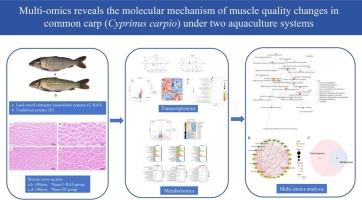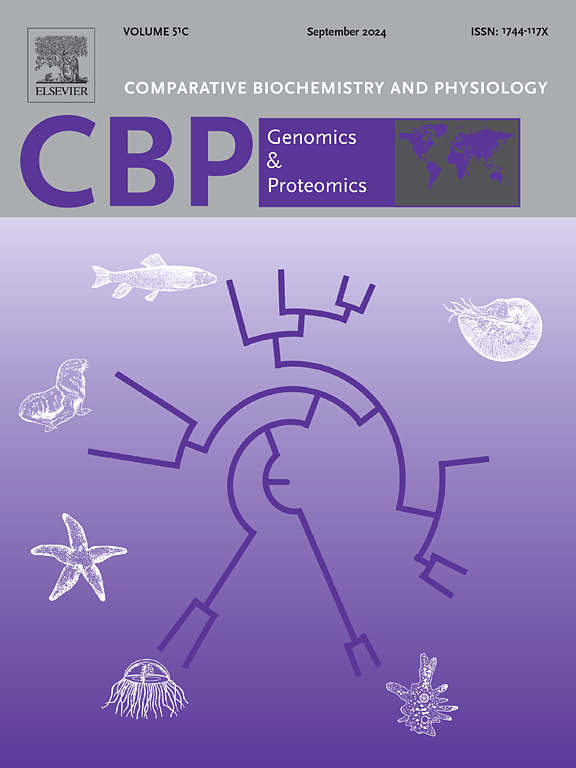Multi-omics reveals the molecular mechanism of muscle quality changes in common carp (Cyprinus carpio) under two aquaculture systems
Abstract
Preliminary experiments in our laboratory have demonstrated that common carp (Cyprinus carpio) cultivated for two months in land-based container recirculating aquaculture systems (C-RAS) exhibit superior muscle quality compared to those raised in traditional pond systems (TP). To elucidate the molecular mechanisms underlying muscle quality variations in common carp cultured under two aquaculture systems, transcriptomic and metabolomic analyses were performed on muscle tissues of specimens aged 11 to 23 months. Comparison of muscle histological sections between the two groups indicated a significantly lower long diameter of muscle fibers in the C-RAS group compared to the TP group (P < 0.01). Conversely, the muscle fiber density was significantly higher in the C-RAS group than in the TP group (P < 0.05). Transcriptomic and metabolomic analyses identified 3390 differentially expressed genes (DEGs)—1558 upregulated and 1832 downregulated—and 181 differentially expressed metabolites (DEMs)—124 upregulated and 57 downregulated—between the groups. Based on integrated transcriptomic and metabolomic analyses, the significant differences focus on metabolic pathways involving glycolysis/gluconeogenesis, arginine and proline metabolism, arginine biosynthesis, and purine metabolism. The study revealed that the muscle quality of common carp in two aquaculture systems is primarily regulated through improvements in energy metabolism, amino acid metabolism, fatty acid metabolism, and purine metabolism. These metabolic processes play significant roles in promoting muscle fiber hyperplasia and hypertrophy, enhancing muscle flavor, and increasing muscle antioxidant capacity. This study provides new insights into the molecular and metabolic pathways that control muscle quality in common carp under different environmental factors.


 求助内容:
求助内容: 应助结果提醒方式:
应助结果提醒方式:


